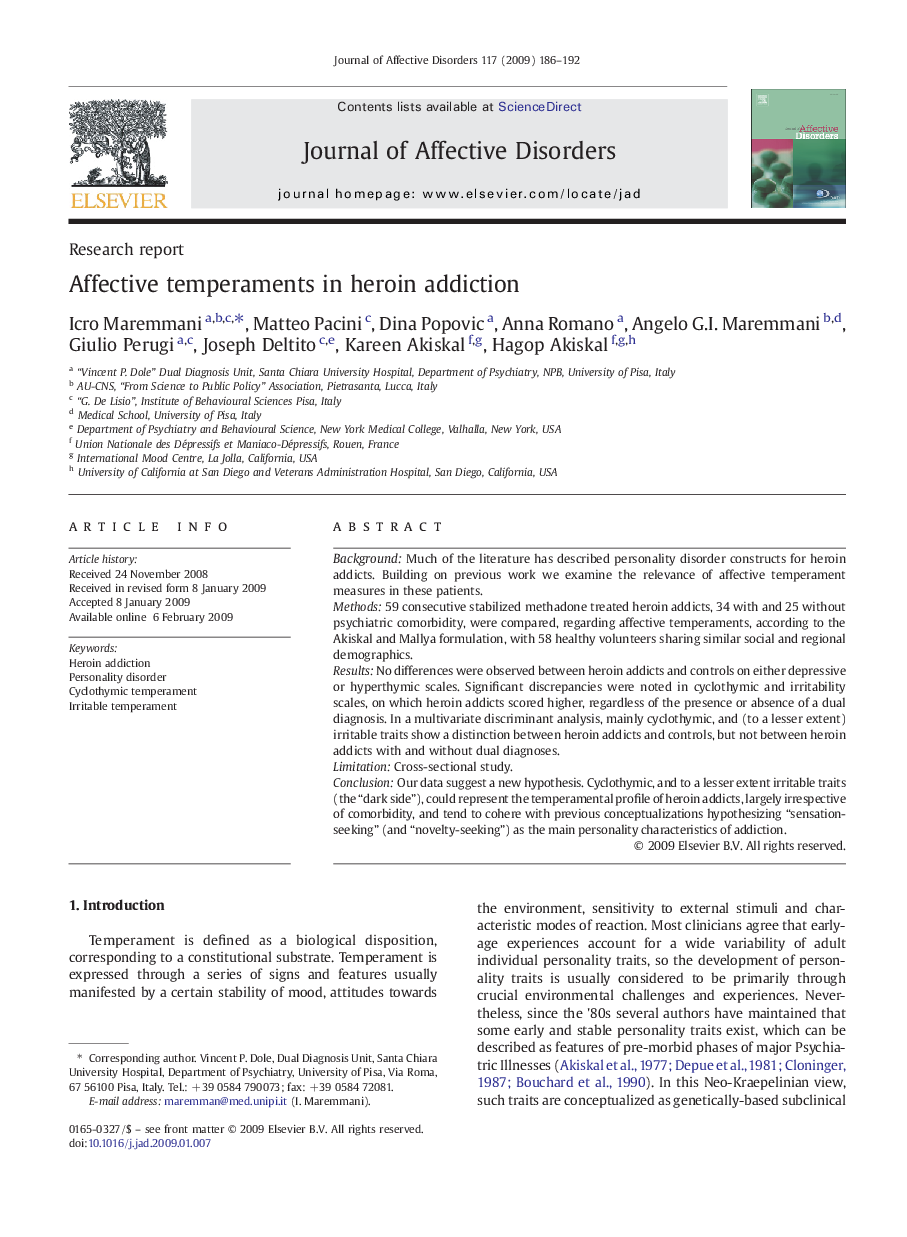| Article ID | Journal | Published Year | Pages | File Type |
|---|---|---|---|---|
| 4187208 | Journal of Affective Disorders | 2009 | 7 Pages |
BackgroundMuch of the literature has described personality disorder constructs for heroin addicts. Building on previous work we examine the relevance of affective temperament measures in these patients.Methods59 consecutive stabilized methadone treated heroin addicts, 34 with and 25 without psychiatric comorbidity, were compared, regarding affective temperaments, according to the Akiskal and Mallya formulation, with 58 healthy volunteers sharing similar social and regional demographics.ResultsNo differences were observed between heroin addicts and controls on either depressive or hyperthymic scales. Significant discrepancies were noted in cyclothymic and irritability scales, on which heroin addicts scored higher, regardless of the presence or absence of a dual diagnosis. In a multivariate discriminant analysis, mainly cyclothymic, and (to a lesser extent) irritable traits show a distinction between heroin addicts and controls, but not between heroin addicts with and without dual diagnoses.LimitationCross-sectional study.ConclusionOur data suggest a new hypothesis. Cyclothymic, and to a lesser extent irritable traits (the “dark side”), could represent the temperamental profile of heroin addicts, largely irrespective of comorbidity, and tend to cohere with previous conceptualizations hypothesizing “sensation-seeking” (and “novelty-seeking”) as the main personality characteristics of addiction.
